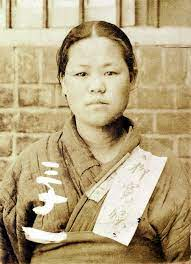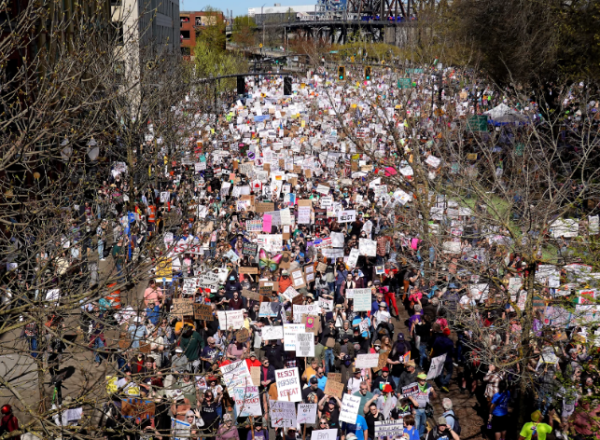Remembering the March First Movement

via Korean Cultural Center
This year marks the 103rd anniversary of the March 1st Independence Movement. Observed as a national holiday, this day remembers the lives of those who stood for Korean independence and spoke out against the Japanese imperialists. In remembrance, Korean flags are placed outside of homes and in many public spaces.
The March 1st movement began when 33 activists, who made up the core of the movement, gathered in a Seoul restaurant on March 1, 1919, and read aloud the Korean declaration of independence Before the declaration was read, the activists broadcasted and published their grievances. The protester’s grievances with the Japanese were the following:
- Employment discrimination against Koreans by the government; the activists claimed that no Koreans held important positions in the government.
- An unequal quality of education was being offered to Korean and Japanese people.
- Mistreatment and blatant disrespect towards Koreans by the Japanese occupiers.
- Political officials, both Korean and Japanese, were arrogant and selfish.
- The administrative processes were too complicated and new laws were passed too frequently for the general public to follow.
- Too much-forced labor.
- Taxes were too burdensome and the Korean people were paying more than before while getting the same amount of services.
- Land continued to be confiscated by the Japanese people for personal reasons.
- Korean village teachers were being forced out of their jobs because the Japanese were trying to suppress Korean culture and teachings.
- Korea’s resources and labor had been exploited for the benefit of the Japanese. They argued that while Koreans were working towards development, they did not receive the benefits of their work.
Chung Jaeyong (정재영) stood before massive crowds in Pagoda Park, Seoul, and read the declaration publicly. The crowds then formed a peaceful protest around the city, while the Japanese officials tried to suppress it. The protesters marched around the city while waving Korean flags, and chanting “long live Korean independence!” Meanwhile, selected independence activists read the same declaration in other areas around the country.
There were approximately 1500 demonstrations across the country, with 2 million Koreans having participated in the movement. As the Japanese struggled to control the protesters, the military was called in and as the protests got bigger the Japanese opened fire. The protests ended with the Japanese massacring several thousand Koreans.
People were not only massacred but also arrested and tortured. Yu Gwansun (유관순) was one of the most notable Korean independence activists. She was born on December 16, 1902, in Cheonan, Korea. The movement’s organizers came to her college and urged her and her friends to join the protest on March 5. Gwansun and her classmates protested in central Seoul, where they were detained. They returned home after missionaries negotiated their release, but it didn’t end there. Gwansun went door to door in her village advocating the movement and spreading the word of an organized demonstration she had planned. 3000 demonstrators chanted “long live Korean independence” in the Aunae marketplace on April 1, 1919. At 1 pm Japanese military police arrived and fired at the unarmed protesters, killing 19 people including Gwansun’s parents. She was arrested.

The Japanese asked Gwansun for an admission of guilt and cooperation in finding other protest organizers in exchange for a lighter sentence. She refused and remained silent, even after being severely tortured.
Gwansun conspired with her fellow inmates to stage another demonstration, on March 1, 1920, marking the first anniversary. She was then imprisoned in an isolated cell. From prison, Gwansun wrote, “Even if my fingernails are torn out, my nose and ears are ripped apart, and my legs and arms are crushed, this physical pain does not compare to the pain of losing my nation. […] My only remorse is not being able to do more than dedicating my life to my country.”
Gwansun died from injuries sustained from torture at the hands of the Japanese authorities on September 18, 1920, at 17. She remains a symbol of Korea’s strength and is considered the Korean “Joan of Arc.” She was awarded the Order of Independence Merit in 1992. The New York Times published her late obituary in 2018, and in 2019 the movie 1919 Yu Gwansun was released, telling the story of her short yet remarkable life.
Korea has changed significantly since the Japanese occupation, which lasted from 1910-to 1945. Japanese occupation in Korea ended 77 years ago, and Japan has yet to acknowledge, apologize or pay reparations for the damages done to the Korean Peninsula. Thousands of people risked and lost their lives standing up for their country, and people. March 1st is a day to reflect on history and admire the bravery of these protesters.

Amany Nassar is a Junior at South Lakes and this is her third year writing for the Sentinel. She loves to read in her free time along with playing flag...













